49 Weird Things to Dehydrate In a Dehydrator – Dehydrated Mushrooms, French Toast, Sauerkraut?!
Welcome! This article contains affiliate links, meaning I get a commission if you decide to make a purchase through my links, at no extra cost to you.
Sick of the old dehydrated banana chips or beef jerky? Here are 49 different weird things to dehydrate! From liver snacks for the dog to wine leather for you, sauerkraut salt & vinegar chips to preserved mushrooms, we’ve collected them all.
I really love pushing appliances to their limits and using them to their full potential, and trying out these foods has changed the way I look at food preservation.
So, if you have some unusual foods you dehydrate in your dehydrator, please share them! Leave a comment below, and I’ll add them to the list with a shoutout. Specific recipes are particularly appreciated!
What’s Inside:
- 49 Weird Things to Dehydrate In a Dehydrator
- 1. Kiwi Fruit
- 2. Beans
- 3. Wine
- 4. Smoked Salmon Slices
- 5. Hearts
- 6. Liver
- 7. Dandelion Root and Leaves
- 8. Jalapenos
- 9. Pineapple
- 10. Sauerkraut
- 11. Kimchi
- 12. Tomatoes
- 13. Broccoli Greens
- 14. Paw Paw or Papaya
- 15. French Toast
- 16. Fish Skins
- 17. Potato Peels
- 18. Rhubarb
- 19. Chamomile Flowers
- 20. Pickles
- 21. Beetroot
- 23. Turnip Greens
- 23. Bacon
- 24. Shrimp
- 25. Marshmallows
- 26. Pine Tips
- 27. Blueberries
- 28. Kale
- 29. Fish Sticks
- 30. Yarrow
- 31. Corn on the Cob for Cornmeal
- 32. Cantaloupe for Cantaloupe Crisps
- 33. Flax Seeds for Crackers
- 34. Radishes
- 35. Lemon Peels
- 36. Turkey
- 37. Snap Peas
- 38. Corned Beef
- 39. Kombucha Scoby
- 40. Garlic
- 41. Garlic Scapes
- 42. Mushrooms
- 43. Seaweed
- 44. Corn Silk
- 45. Nettle
- 46. Apple Peels
- 47. Zucchini
- 48. Potatoes
- 49. Sweet Potatoes
- A Note on Dehydrators
- Final Thoughts
- More Reading on Food Preparation and Preservation
49 Weird Things to Dehydrate In a Dehydrator
1. Kiwi Fruit
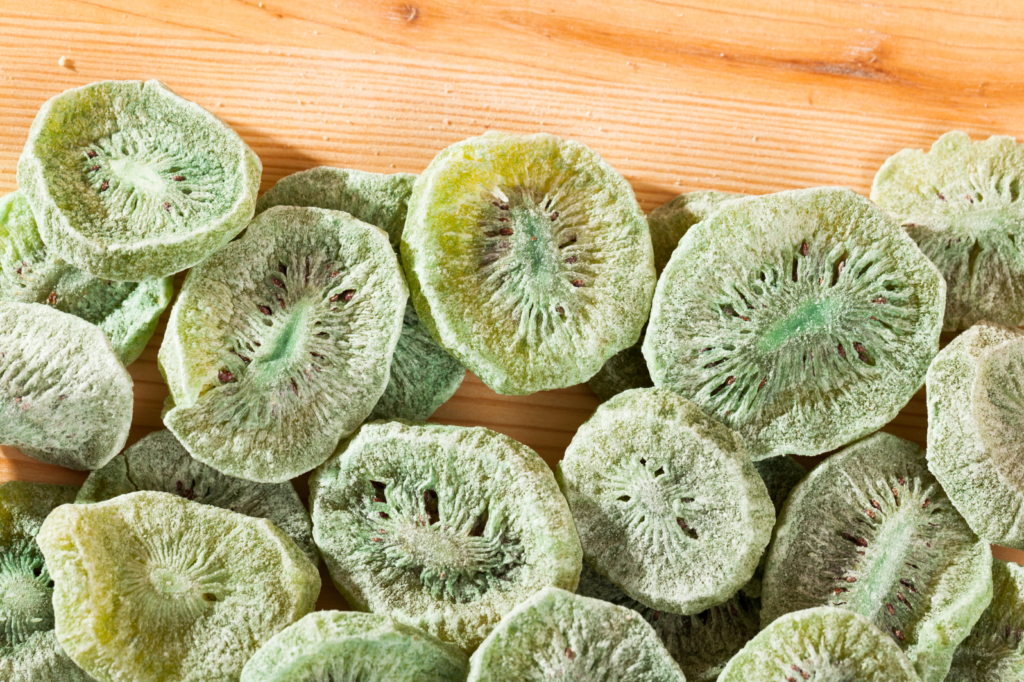
Dehydrated kiwi will end up like little sweet gummy bears, making them the perfect stand-alone snack or addition to trail mix, oatmeal, granola, or yogurt. They’re also perfect for kids’ lunches.
All you need to do is peel, dry, then dehydrate your kiwi. After you pull them out of the dehydrator, you’ll notice that the sugar has risen to the surface, giving them a frosted candy appearance and taste that rivals any gummy snack.
2. Beans
Beans are an excellent source of protein, so why not use them to make your own protein powder? Dehydrated bean powder is a great protein additive, but it also makes an excellent starch or binding agent for making soups, gravy, and veggie burgers, to name just a few things.
To make the powder, just dehydrate your favorite type of beans – I’m partial to lima beans and black beans – grind them in a food processor or mortar and pestle, and add them to any meals or smoothies.
You can use homegrown or canned beans, but I always recommend trying to use homegrown ones! If you want to learn more about how to grow your own beans, you might want to read our other article on Growing Black Beans.
3. Wine
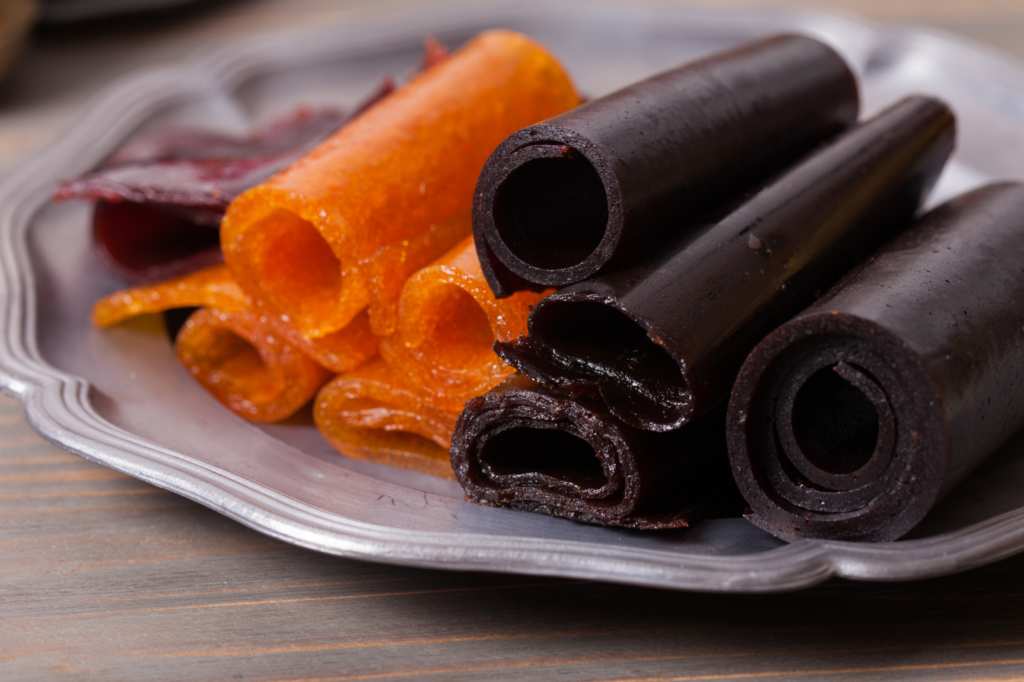
To make your own wine fruit leather, mix a few cups of your favorite wines with fruits like strawberries and sugar. Then, dehydrate it and roll it up. Divine!
To make the fruit leather, I usually mix 3/4 cups apple sauce with 1/3 cup wine in a blender. You can also add around 2 cups of fruit, such as grapes, apricots, prunes, cherries, or strawberries, to the mixture for a more flavorful result.
Then, blend the mixture well. After that, just pour it into your dehydrator and dry it at 135º F for 5-9 hours or until it has a flexible texture.
While it is challenging not to eat all of these yourself, wine fruit leather does make a superb gift. Just roll them up, tie them in little cones with pieces of ribbon, and put them in a tin or box.
I love giving these to my family and bringing them to dinner parties for my friends. They’re always a big hit!
4. Smoked Salmon Slices
When dehydrated, smoked salmon will turn into salmon jerky. These strips of delicious jerky make one of the best protein snacks and are perfect for traveling, camping, or even a hectic workday. I love bringing these on my backpacking trips since they are better than beef jerky and add a little intrigue to bland meals.
5. Hearts
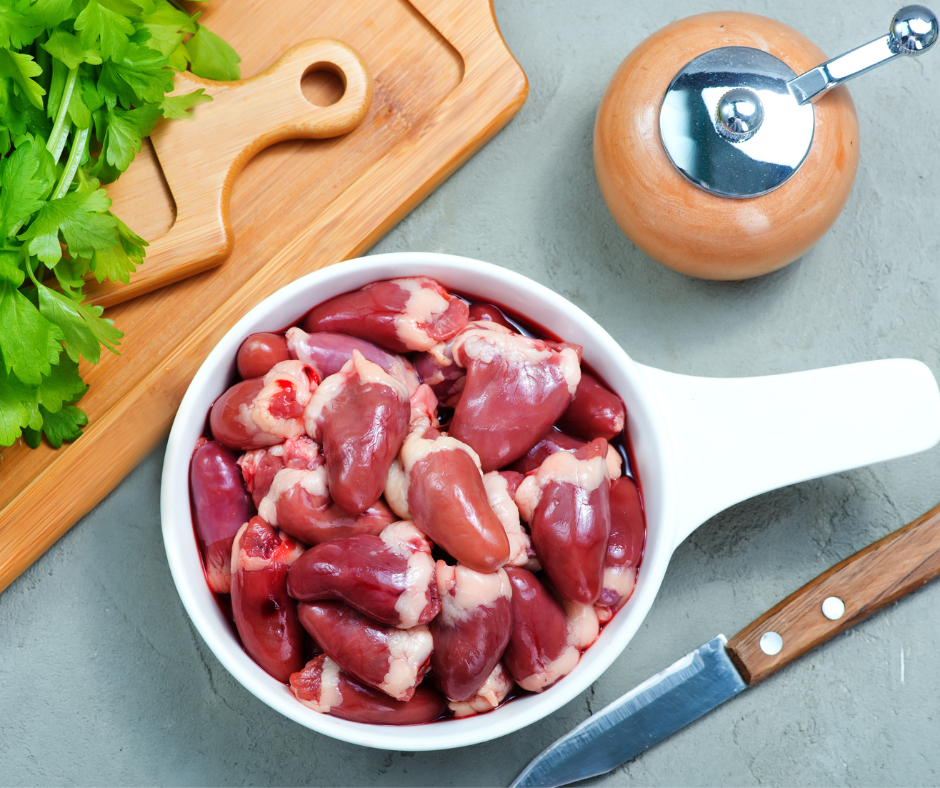
Contrary to what you might think, these don’t smell as bad as they sound when they’re in the dehydrator, but these are certainly a weird thing to dehydrate!
Like liver, these make perfect dog treats. Just cut them up, dehydrate them, and store them in a small airtight container until your pups are ready for a snack!
6. Liver
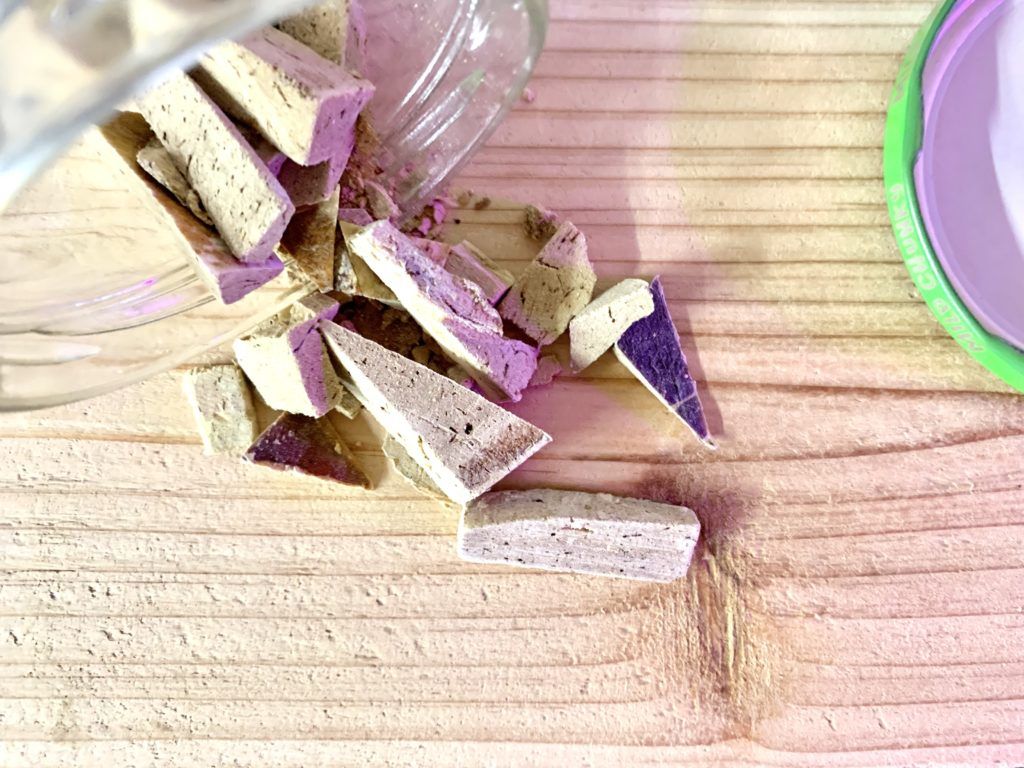
Dehydrated liver doesn’t smell the prettiest, but it makes excellent dog treats.
In fact, liver treats like these Bil Jac ones are some of the most popular treats for training dogs! So, why not save money and skip the preservatives by making your own at home?
All you need to do is use some kitchen shears to cut the liver up into bite-sized chunks and stick them in your dehydrator. Your pets will love them!
7. Dandelion Root and Leaves
Dehydrated dandelion root is a natural substitute for coffee and lasts for ages when you store it in a dark, dry, and cool place. No more trying to eradicate the dandelion “weed!” Grow your own coffee with them instead!
Plus, dandelion leaves are edible, too! Stick them in a dehydrator, season them, and you’ve got a free, delicious substitute for kale chips.
P.S. Make sure you’ve actually got Dandelion, not Wild Lettuce! We’ve got a guide to help you tell the difference here: Wild Lettuce vs Dandelion – What’s the Difference between Dandelions and Wild Lettuce?
8. Jalapenos
Dehydrating your own jalapenos is a great way to preserve homegrown peppers or make them more versatile.
After dehydrating them, leave them whole or crumble them into a powder for seasoning and store them in a plastic bag or old jar. They’ll last for many years and make a great seasoning powder for taco sauce, enchiladas, bread, soups, casseroles, and so many other things!
If you want to grow your own jalapenos to dehydrate, check out our guide on Growing Jalapeños in Containers. It’s surprisingly simple to get a huge harvest from these plants, even in containers.
9. Pineapple

You can use fresh or canned pineapple to make this dehydrated snack.
However, the size and type of pineapple you use will affect the end result. Using thinly sliced pineapple will make for a crispy, sweet chip, while larger pieces will have the consistency of a fruit snack or candy.
Also, fresher pineapple will give your dehydrated pieces a crunchier consistency, while canned fruit is softer.
10. Sauerkraut

When you dehydrate sauerkraut, it tastes just like salt and vinegar chips. They make a super yummy snack and are much healthier than fried potatoes!
You can use homemade sauerkraut or canned, but I recommend making it yourself! It’s very easy, fun, and budget-friendly. A huge benefit of making your own is the ability to add extra seasonings like garlic, dill, dehydrated jalapeno or chili powder, or anything else you desire!
11. Kimchi
Dehydrated kimchi is a lot like sauerkraut, but it has an extra salty, savory, and sweet flavor that’s difficult to describe. Add on the crunch from dehydration, and you’ve made something truly unique. It’s a flavor you won’t find in grocery stores, so give it a shot if you like kimchi!
I love using spicy kimchi like Madge’s Spicy Vegan Kimchi to dehydrate and make my own hot, savory kimchi-flavored cabbage chips.
12. Tomatoes
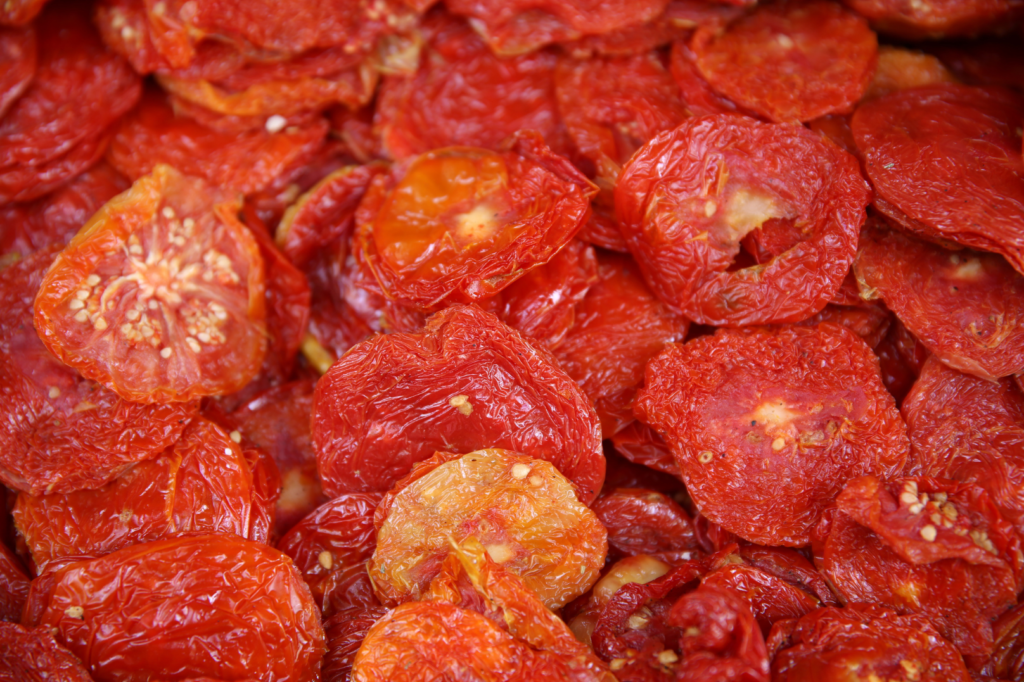
Dehydrated tomatoes make an incredible addition to pasta, pizzas, bread, soup, and anything else you could want tomatoes on! They’re a budget-friendly substitute for sun-dried tomatoes and are even more cost-effective if you grow your own.
To make dried tomatoes, dehydrate them in slices and use them as is or powdered. Otherwise, you can also blend them with some fruit pectin to make tomato leather.
Also, if you already have a big harvest of tomatoes or a bunch of them going bad in your fridge, you might find our article on the Best Fermented Tomato Recipes helpful.
13. Broccoli Greens
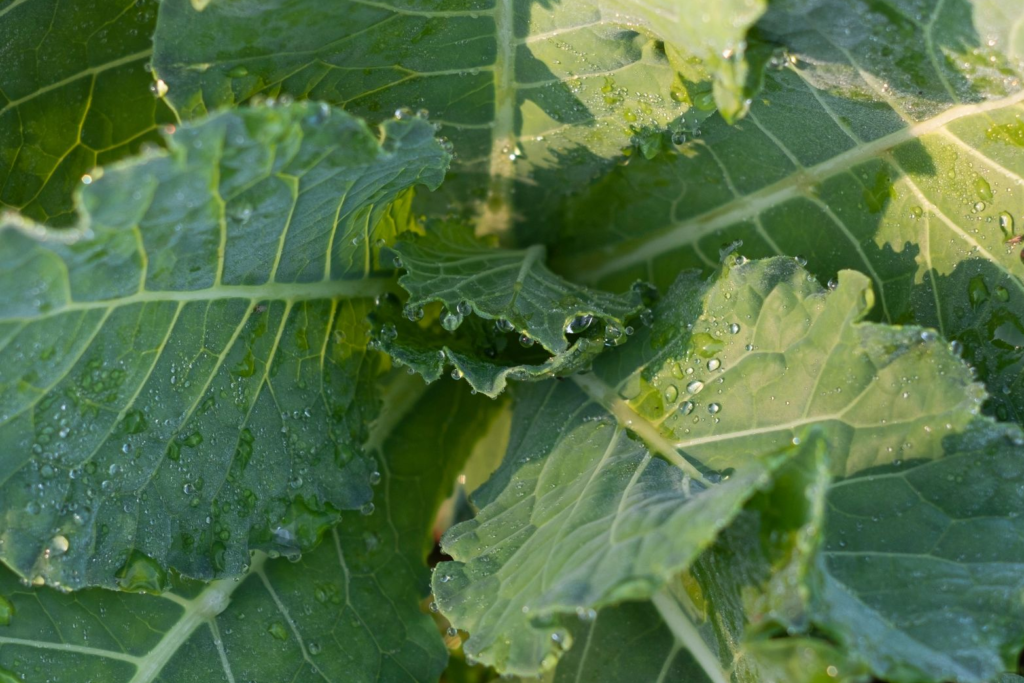
Those thick leaves of your broccoli are more useful than you’d think! Most people throw them away, but they make an incredibly nutritious powder.
You can add them to any meal, but I love pouring some into my green smoothies for a fresh, slightly bitter flavor. You can eat them like snacks, too – they’re similar to kale chips.
14. Paw Paw or Papaya
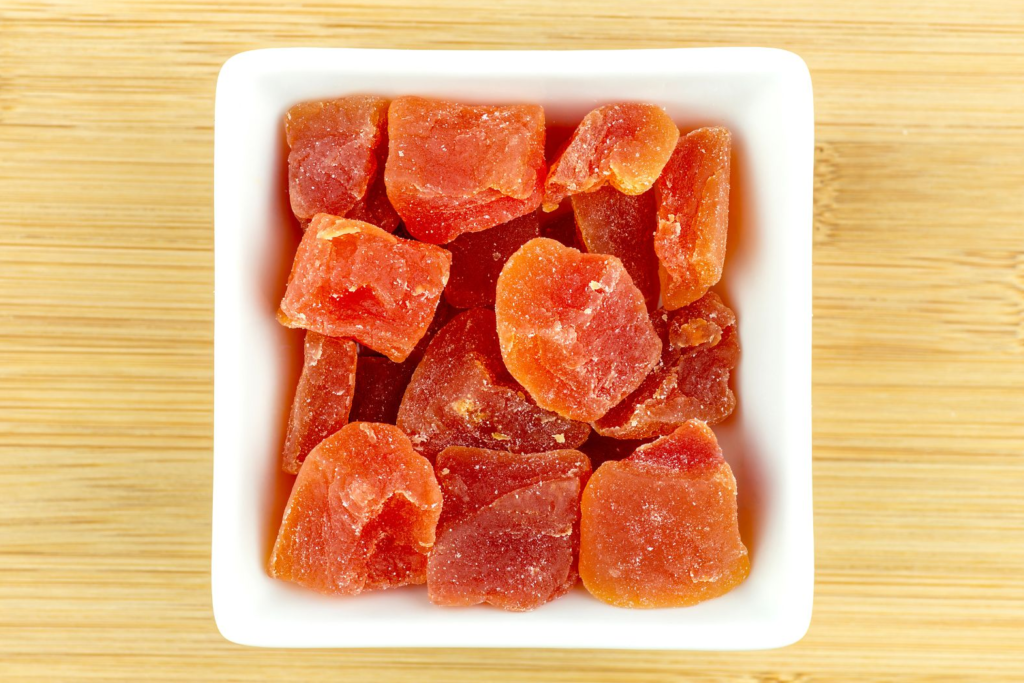
Like the other sugary fruits on this list, paw paw makes for a sweet, candy-like snack when dehydrated, and it lasts many years if you store it in an airtight container. As a bonus, it’s also great for your pets.
I love to mix papaya with dehydrated pineapple, orange, and guava to make a snack mix that takes my tastebuds straight to a tropical island. However, it’s also a great addition to your breakfast staples like oatmeal, cereal, pancakes, waffles, yogurt, and granola.
15. French Toast
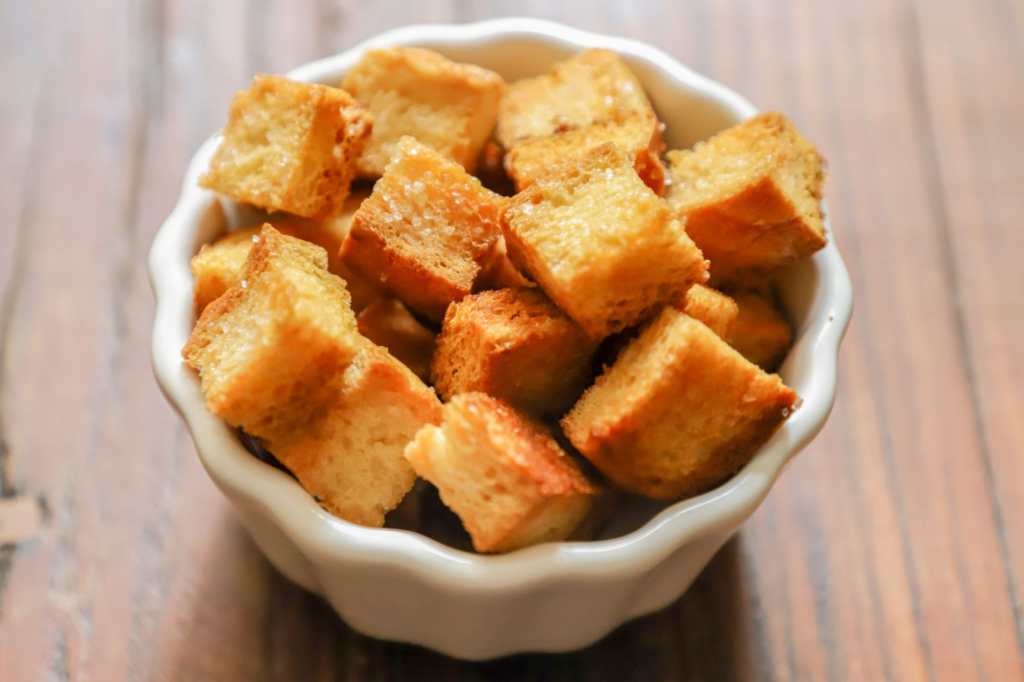
Dehydrated french toast bits are like sweet croutons that taste like Cinnamon Toast Crunch. They may be a weird thing to dehydrate, but they’ll quickly make their way into your regular dehydration repertoire with their incredible taste!
To dehydrate your french toast, make it as you normally would and keep it in the freezer while cooking your full batch. That stops the bread from getting soggy.
Then, brush some maple syrup or honey onto each slice and cut it into pieces. Dehydrate for about 6 hours. This works for raisin french toast, too.
Eat them as snacks or as cereal in the morning. They’re delicious in salads, too – I add them to my salads with fresh strawberries, dehydrated cranberries, and a raspberry vinaigrette for a sweet lunch.
16. Fish Skins
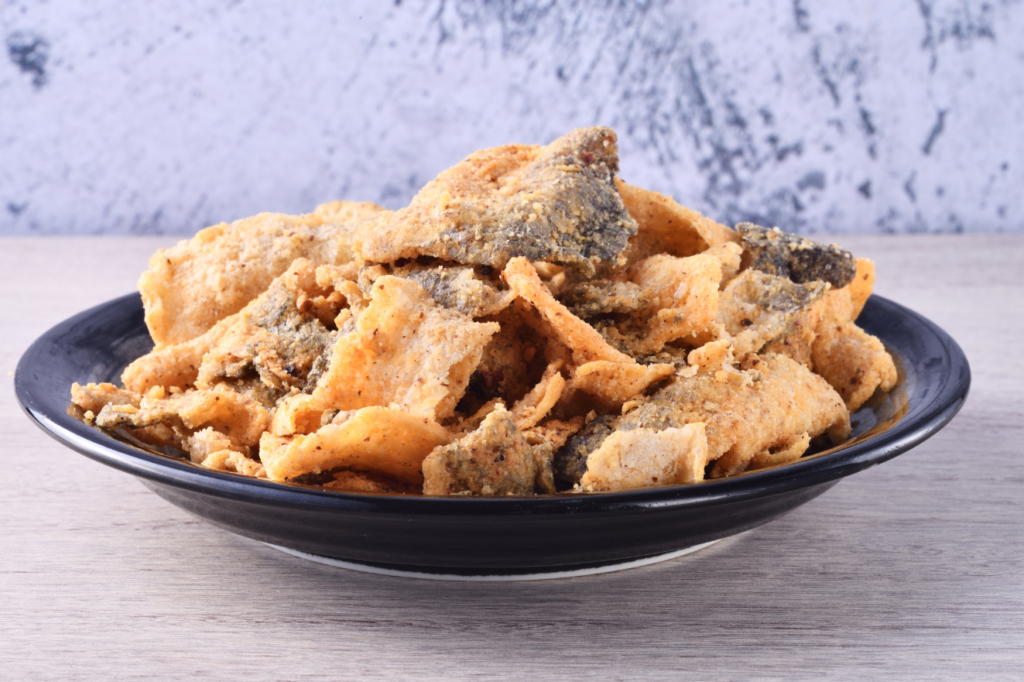
Fish skins might seem like a weird thing to dehydrate, but they are quite common in many Asian countries.
So, if you’re not one to eat the skins of your fish, save them up and dehydrate them. These turn into fish chips, but if you crumble them up, you can add a salty, fishy garnish to anything!
I recommend combining dehydrated fish skins with some dehydrated seaweed and sesame seeds for the perfect topping on rice or ramen.
17. Potato Peels
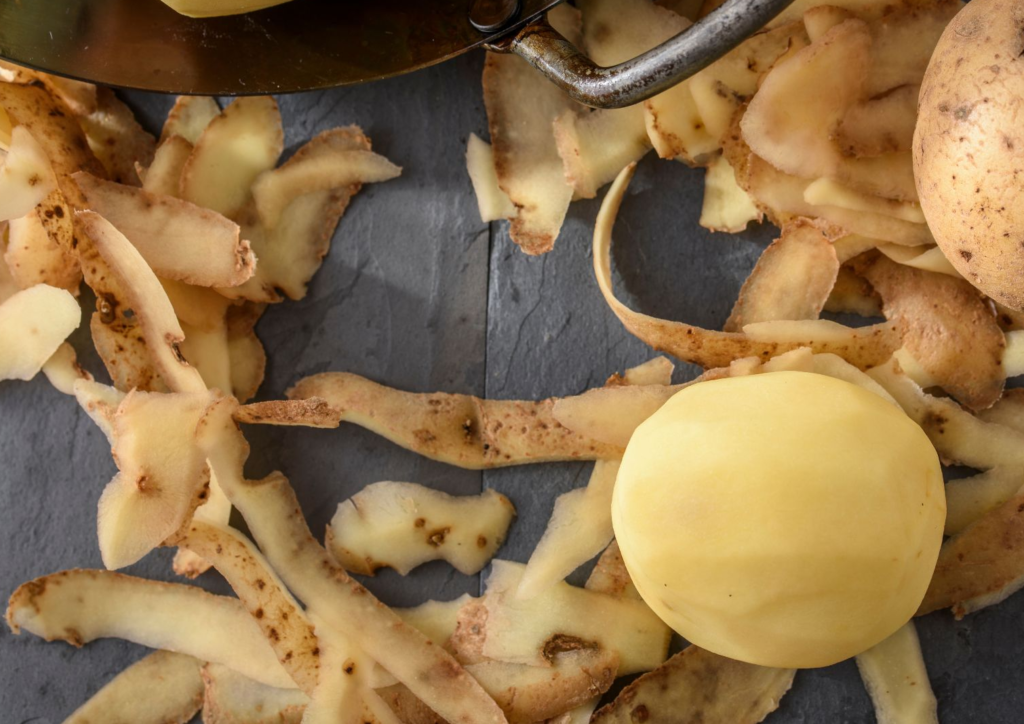
Next time you have mashed potatoes or fries, don’t throw the peels away. Instead, sprinkle them with salt and paprika, then dehydrate them to make homemade healthy potato chips!
Aside from the health benefits of these chips, making them yourself allows you to fully customize the flavor. Spray some vinegar on them for salt and vinegar, add some liquid smoke and sugar for BBQ flavor, or go rogue and create your own custom chips.
18. Rhubarb
As weird as it may seem, my favorite way to use rhubarb is to make dehydrated sour candy from the bright stalks. These candies taste incredible and are a great healthy substitute for popular sour candies like Warheads.
To dehydrate your rhubarb, chop the brightly colored stalks or use a carrot peeler for thin slices. Then, soak your rhubarb chunks in syrup for an hour, drain them, and dehydrate them. Homemade sour candy!
19. Chamomile Flowers
Chamomile tea is a staple in my home, and you’ll find me cozied up with a warm mug of it every night before bed. However, that means I go through a lot of it, which can get pretty expensive.
So, when I figured out I could make my own from scratch, I immediately planted these delightful little flowers in my yard.
Dehydrating chamomile is simple. Just pick some flowers, stick them in the dehydrator, wait around 2 hours, then stick the loose tea in a tin or other airtight container.
If you’re a tea drinker like me, you might want to check out our other article on How to Grow Your Own Tea. It’s full of helpful tips to help you set up and harvest from your own tea garden!
20. Pickles
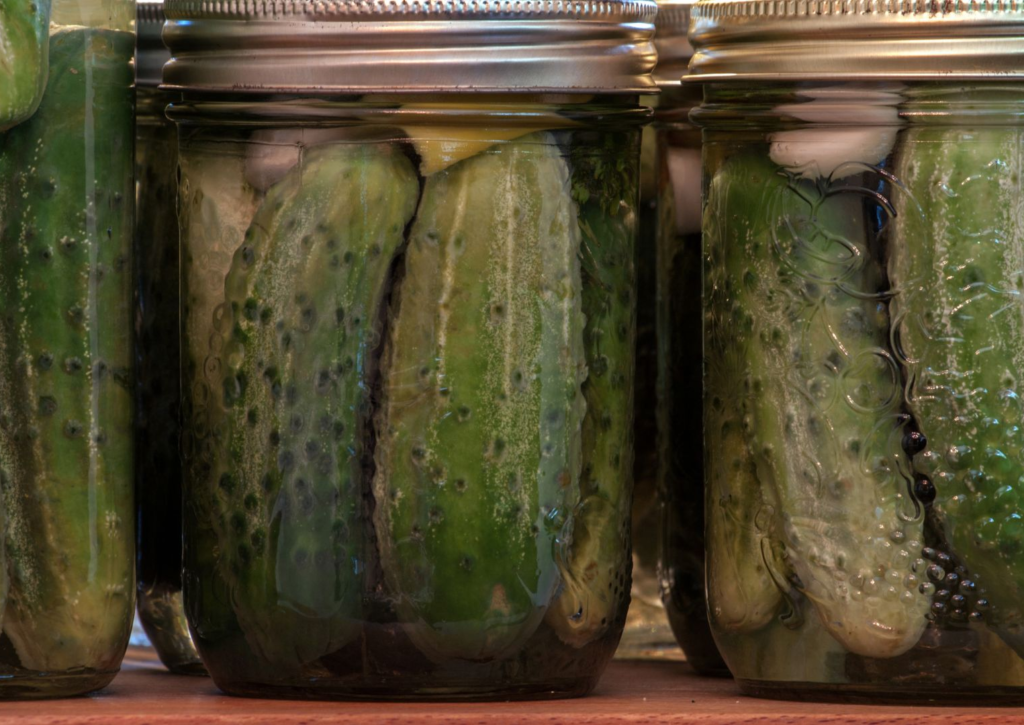
Dehydrated pickles are definitely one of the weirdest things to dehydrate on this list, but they are surprisingly good. They are great in seasoning for popcorn, dehydrated potato skin chips, or any type of veggie chip. Try some in martinis, too!
To dehydrate them, allow them to dry, then either leave them whole or slice them to make chips. Then, if you don’t like your food too salty, be sure to rinse them off. They pack a serious punch, even after drying out.
Then, stick them in your dehydrator, wait a few hours, and store them. You can also grind them up at this stage if you want to use them as powdered seasoning.
Naturally, using your own pickles is best since you can customize the flavor – I like to add plenty of garlic to my pickles.
If you want to learn about making your own pickles, head on over to our guide on choosing the best cucumbers for pickling.
21. Beetroot

Beets are some of the best things to dehydrate, in my opinion, thanks to their versatility and earthy taste.
They make delicious veggie chips if you cut them into slices and salt them, and they are also incredible in fruit leather if you puree them and mix them with applesauce.
You can also use them as a sweet and savory seasoning or red dye – perfect for a vegan red velvet cake – if you dehydrate and powder them.
Another way I use dehydrated beet powder is as blush and pigment for beeswax lip gloss. Beet is an environmentally-friendly makeup that will never weigh down your skin or cause breakouts.
So, if you haven’t dehydrated beets yet, I highly encourage you to give them a try!
23. Turnip Greens
If you are the kind of person who doesn’t often reach for the leafy greens, you can use turnip green powder to supplement your diet.
Dehydrated and crushed turnip greens are the best for adding a superfood punch to your soups, salads, sandwiches, smoothies, casseroles, meats, and so much more. You can sprinkle them anywhere, and they’ll give you a hint of green without turning your favorite foods into salads.
23. Bacon

Bacon jerky is a real game-changer, and it’s the best jerky you’ll ever have, guaranteed.
Season the bacon strips with salt and brown sugar before dehydrating them for a sweet barbecue flavor. Snacks don’t get better!
Plus, crushing the bacon after dehydrating makes for chewy, crispy, and intensely flavorful bacon bits. Sprinkle them on your salads or potatoes for the ultimate seasoning!
However, before you try it, it’s helpful to know that cooking your bacon first will give it a different texture. If you cook the bacon, it turns out hard and crunchy. If you use it raw, it comes out chewy like jerky.
24. Shrimp

Dehydrated shrimp, though they may sound weird, make for an ultra-yummy snack. However, they are also wonderful as garnish atop noodles, salads, and soups.
To dehydrate them, butterfly them, dip them in egg yolk, and season them with your favorite seasoning. I always use Old Bay, but other great spices are Tajin, garlic salt, black pepper, and lemon, or chili powder. Then, dehydrate your shrimp and enjoy!
25. Marshmallows
Marshmallows may seem like an unusual thing to dehydrate, but they are more common than you’d think. You’ll frequently find them in granola bars, pre-packaged hot chocolate mixes, and cereals.
I recommend using them to make a s’mores-style trail mix with peanuts, cereal, and chocolate chips. However, they are also perfect for making homemade hot chocolate bombs or mixes, rice crispy treats, and tons of desserts. Another great use for them is as a topping on chocolate chess pie – it’s delicious!
To make your dehydrated marshmallows, dehydrate them as-is or grind them into a sweet marshmallow powder. You can use the powder as a sweetener for coffee, tea, or confections!
26. Pine Tips
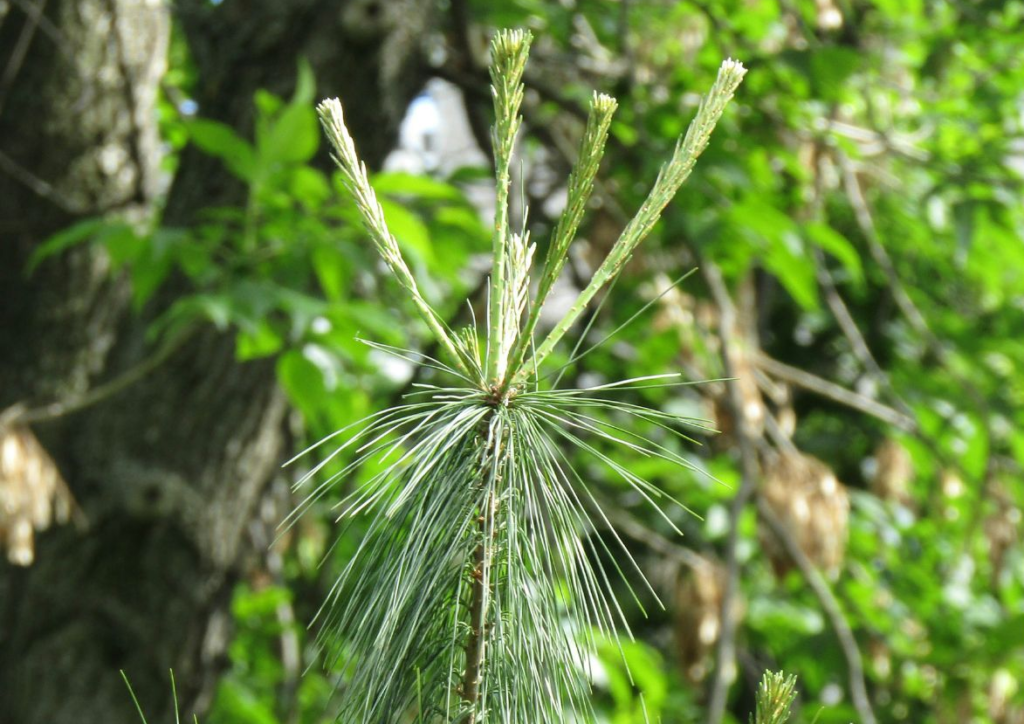
Pine tips are the young growth on pine trees, and you’ll recognize them by their fresh, green color. These young needles are very soft and taste like citrus, but they don’t last too long after picking them. So, dehydrating is a great way to preserve them.
You can use them in tea, meals, and baking, or add them to smoothies for a fresh twist.
My favorite way to use them, other than in mint-pine tea, is to make pine and lavender scones. Just grind up your dehydrated pine tips and put them in your batter for a unique flavor that seems like it belongs in a 5-star restaurant.
27. Blueberries
Dehydrated blueberries are very versatile. They make a great snack, but they’re also a perfect ingredient in all sorts of sweet foods.
Try them in trail mix, pies, homemade confections, oatmeal, granola, and more. They make fantastic blueberry muffins!
28. Kale

In the dehydrator, kale makes lovely kale chips. They are a super healthy snack, and you can season them however you wish. Try garlic and soy sauce, hot sauce, black pepper and salt, mustard, dill, wasabi, or salt and vinegar to spice up your snacking!
29. Fish Sticks
Dehydrated fish sticks rank among the weirdest thing to dehydrate, but they also make a crispy, crunchy, salty garnish for foods like tuna casserole, ramen, and rice.
They can be quite hard and chewy, so they’re best when you just barely rehydrate them by serving them on something steaming hot.
If you want to give them a try, thaw out frozen fish sticks or cook fresh ones from any sort of fish you prefer. Then, dehydrate them and crumble them up in a food processor until they have a breadcrumb-like consistency.
30. Yarrow
Yarrow is a forageable herb that makes an excellent ingredient in tea. Of course, you can always grow it yourself to keep it in stock.
Yarrow is a medicinal herb, and according to the experts at the University of Iowa, it’s thought to have anti-inflammatory, analgesic, hemostatic, antidiabetic, antitumor, antioxidant, antifungal, and antiseptic properties.
Although I can’t say for certain that it’s the cure-all some people make it out to be, it sure makes for a tasty cup of tea and can last for many months when you dehydrate it!
31. Corn on the Cob for Cornmeal
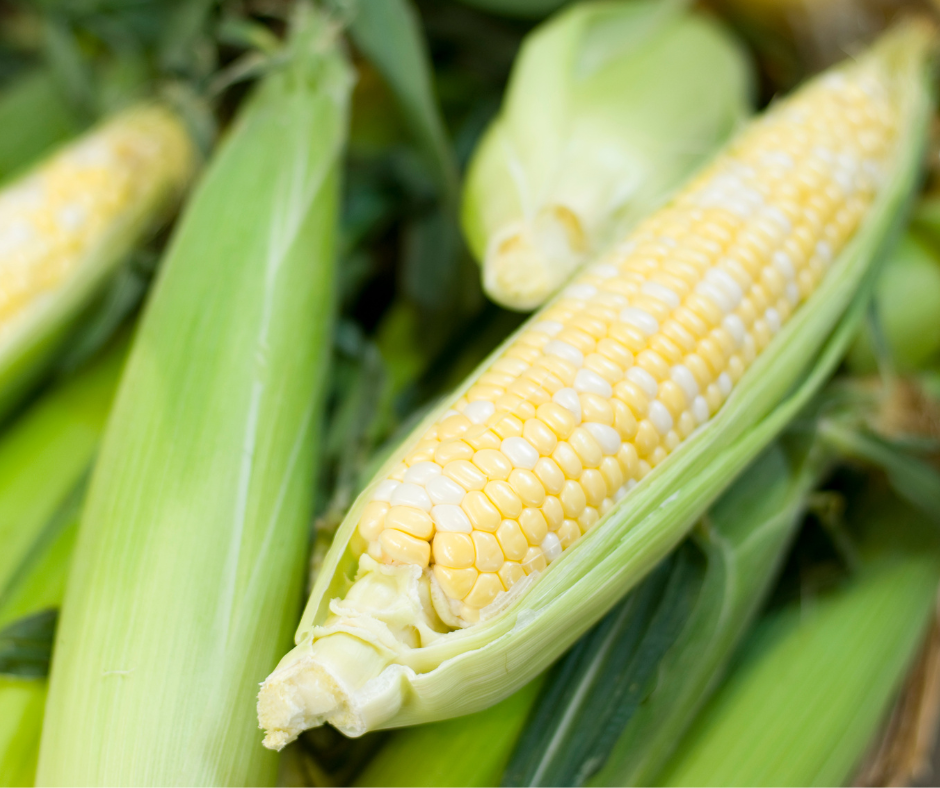
Once you’ve tried this trick, you’ll never make cornbread any other way!
You’ll first need to cook and shuck your corn to dehydrate it. When cooking, I recommend steaming it for about 15 minutes until the corn is soft and easy to pull off the cob. Then, use a sharp knife to cut the corn kernels off and place them straight into your dehydrator.
After dehydrating, you have a base for your cornmeal. When you want to use it, just grind it for the freshest taste.
Even if this tip seems strange, you won’t think it’s weird after dehydrating your own cornmeal!
32. Cantaloupe for Cantaloupe Crisps
Cantaloupe’s firm consistency makes for some incredible, crispy, chewy fruit chips once dehydrated. However, you can also dehydrate it in chunks and combine it with the other fruits on this list to make a nutritious, scrumptious fruit mix that’ll make everyone happy.
33. Flax Seeds for Crackers

Make flax seeds into flax crackers with water and some Braggs Liquid Aminos or other seasonings. Before dehydrating, soak the seeds for an hour – they are very absorbent and will soak up most of the water.
Then, spread them thinly in your dehydrator, season to taste, and dehydrate. Once they are all dry, break them into pieces for rustic, artisanal-style crackers.
34. Radishes
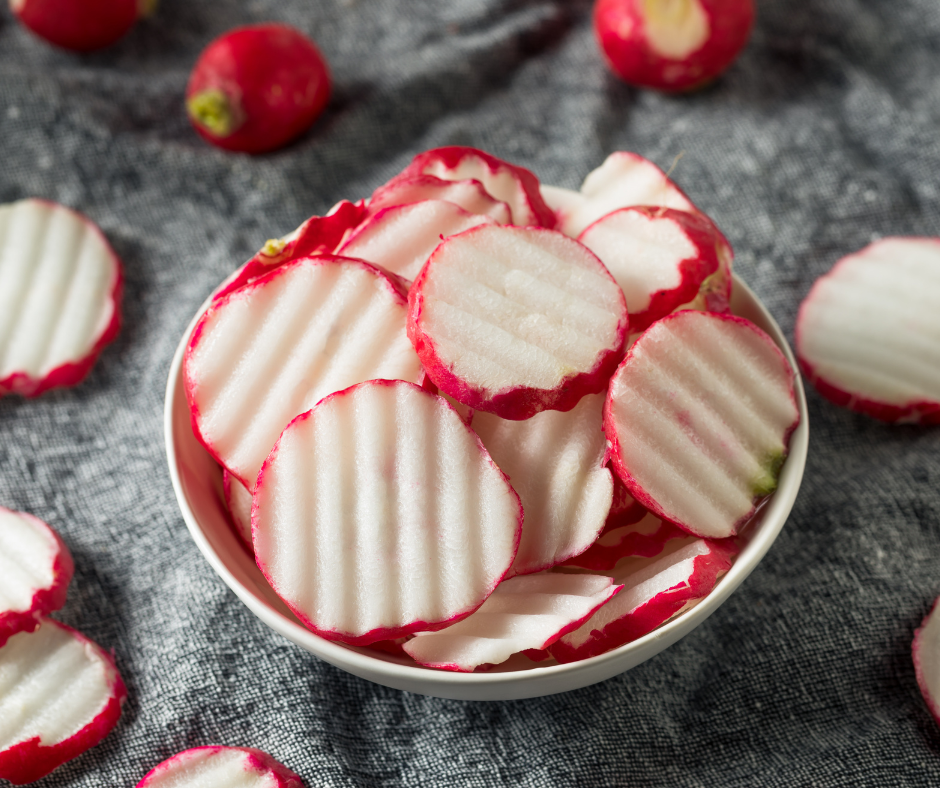
If you’re looking for a super crunchy weird snack to dehydrate, this one’s for you! Dehydrated radishes have a crisp, fresh, and peppery taste that rivals any cracker or potato chip, and they’re so good for you, too!
I love dehydrating my homegrown radishes with a few slices of lemon, a couple of cloves worth of garlic powder, and some ground black pepper for a 100% homemade snack.
35. Lemon Peels
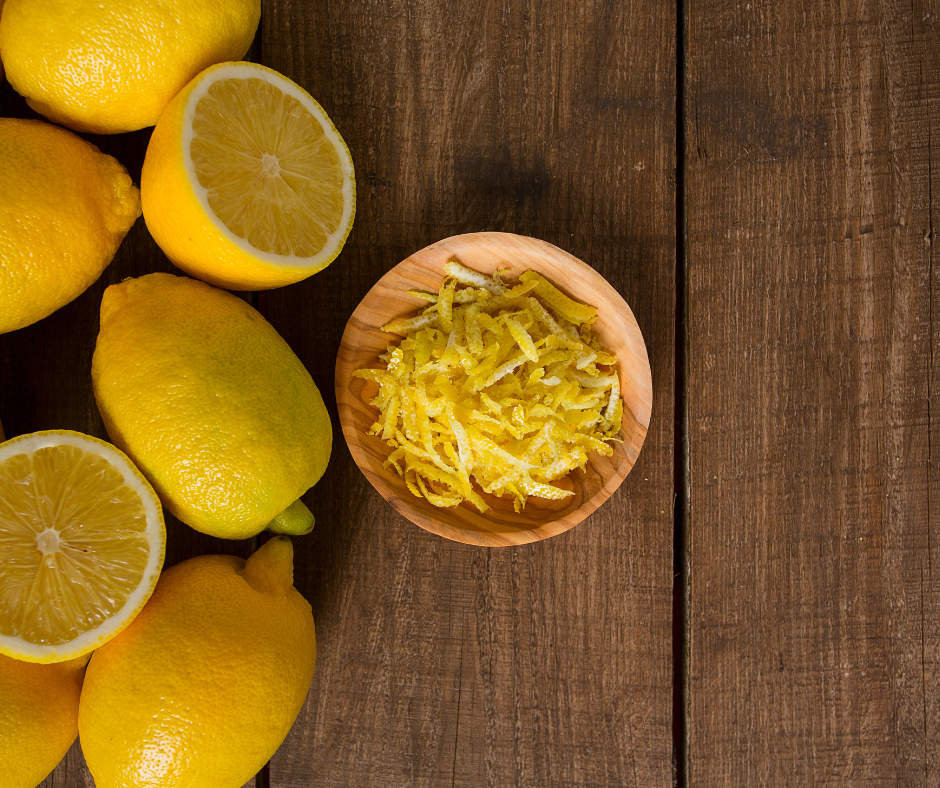
Dehydrated lemon peels make lemon powder, which you can use in all sorts of seasoning blends or as a stand-alone spice.
To make homemade lemon peel powder, grind up your dehydrated lemon peels in a blender and use it just like lemon zest. It’s great in cakes, meals, smoothies, homemade tea – everything. I also use mine to make that black pepper and lemon blend I’ve been mentioning.
This trick works for other citrus fruits too, so it’s perfect when you have a big harvest of citrus to use up.
36. Turkey
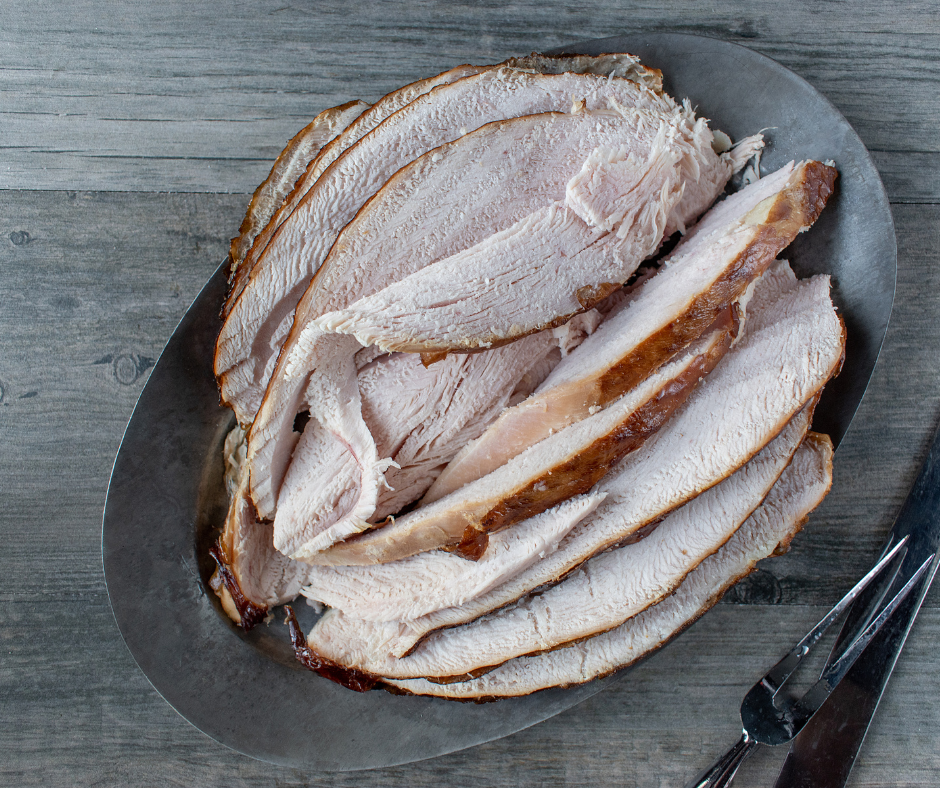
Thinly sliced roasted turkey makes fantastic chips for you, your kids, or your dogs. Everyone loves it!
Dehydrated turkey is also great when paired with those flax seed crackers I mentioned earlier. Add some cheese, and you have a portable snack that won’t spoil too quickly!
37. Snap Peas

Dehydrated snap peas aren’t the weirdest thing to dehydrate, as you’ll often see them sold on grocery store shelves. However, few people think to recreate these crispy snacks at home.
To make some scrumptious snap pea chips, wash your peas, then coat them in oil and seasonings — again, that lemon pepper seasoning made with dehydrated lemon peels is my go-to.
Then, just dehydrate those peas and crunch away!
38. Corned Beef
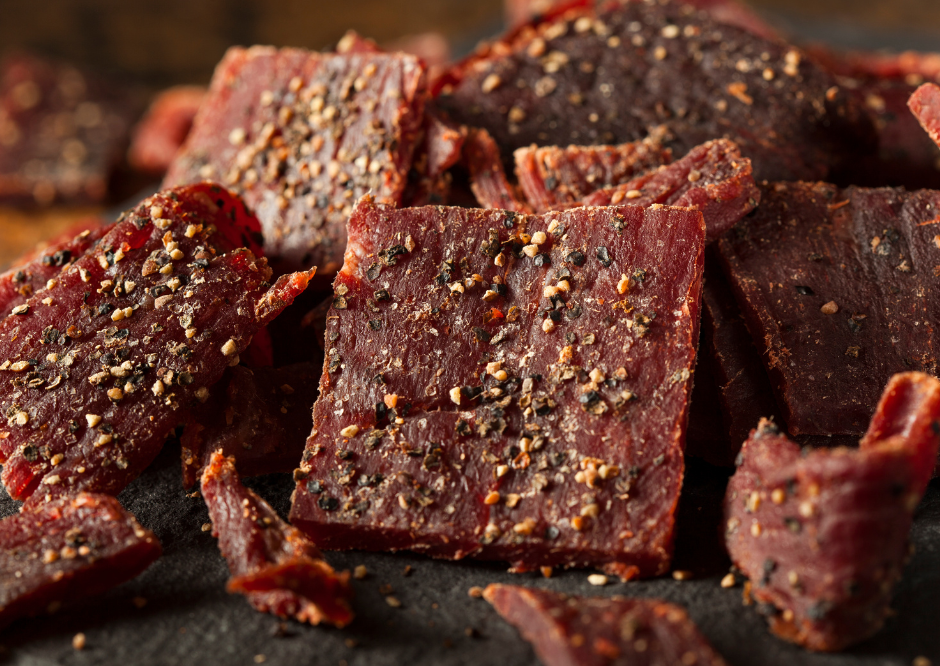
When dehydrated, corned beef becomes a uniquely salty, slightly sweet – almost indescribable – jerky. This weird thing to dehydrate is perfect for people who love beef jerky but are a bit burnt out on it.
To make it, slice your corned beef into bite-sized chunks, add seasonings if you want, then dehydrate it!
39. Kombucha Scoby
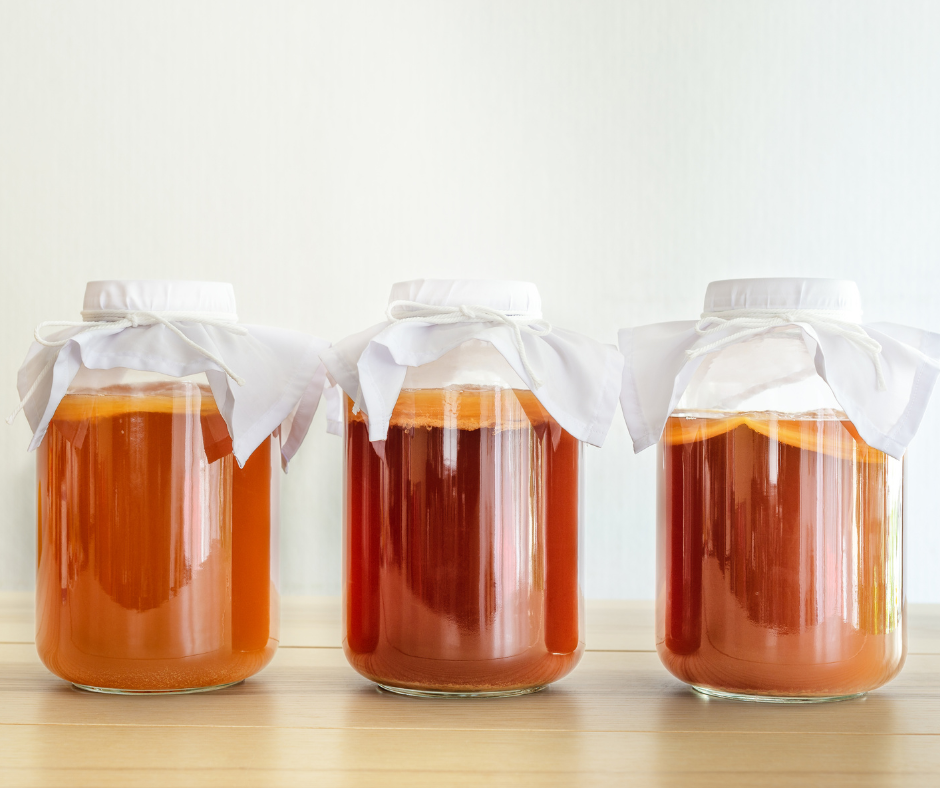
I used to have three different kombucha scobys, but I produced way more kombucha than I could drink after a while. That’s where this weird thing to dehydrate really came in handy!
If you want to downsize your scobys, make them into a yummy vegan jerky!
Just cut it into thin strips, then dehydrate. Many dogs love it as a treat, but then again, so do humans.
40. Garlic
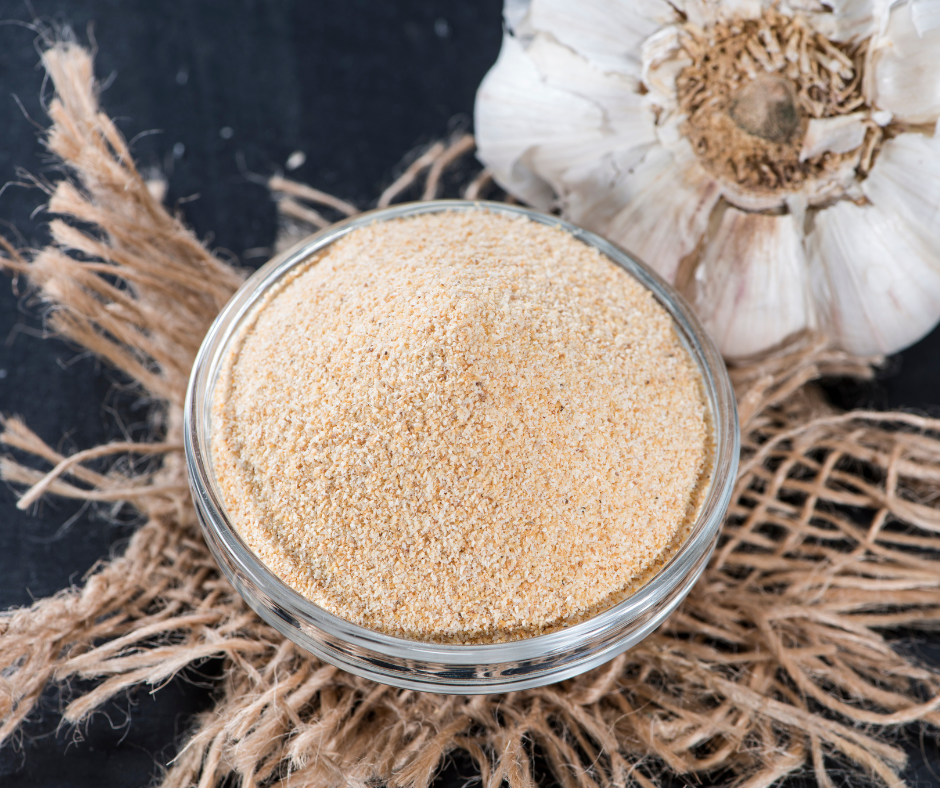
If you use garlic powder as much as I do, you’ll get a lot out of this weird thing to dehydrate! Dehydrating garlic cloves allows you to make homemade garlic powder.
So, if you have so much garlic that it’s sprouting in your pantry or starting to feel mushy, don’t just replant it or compost it. Throw it in your trusty dehydrator, grind it up, and bottle it for later.
41. Garlic Scapes
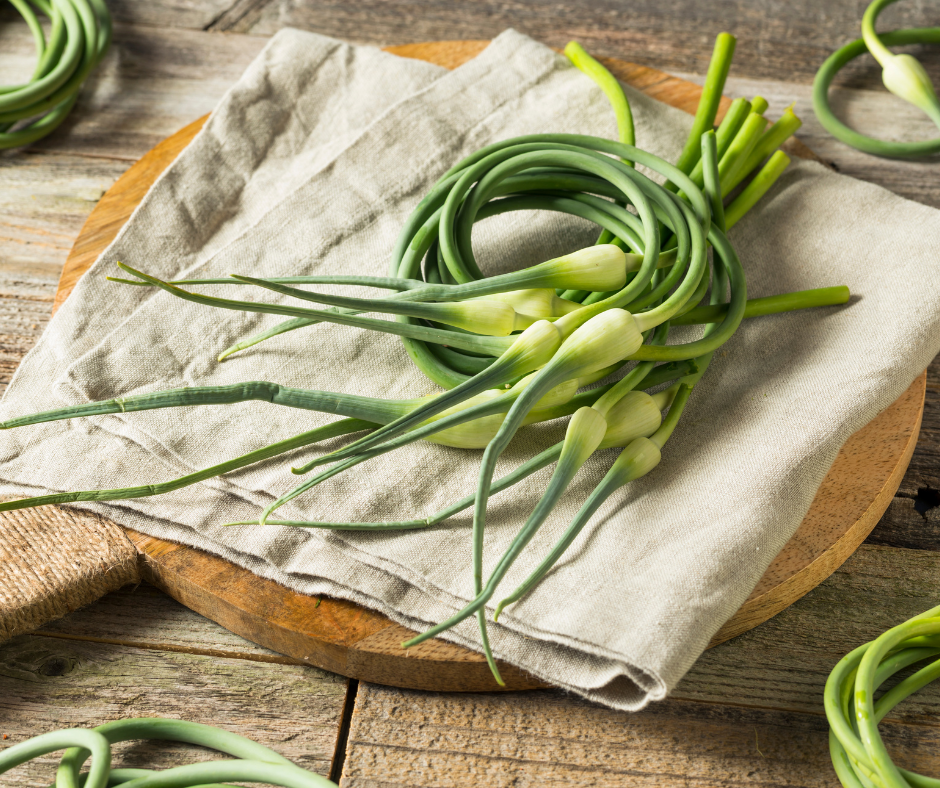
If you’ve ever grown hard neck garlic, you might have come across their scapes. Not many people know what to do with these, but you can dehydrate them and use them just as you would use garlic. Plus, removing the scapes helps produce bigger garlic, so it’s a win-win.
To dehydrate them, chop them into slices and stick them in your dehydrator. Then, pop a few into anything you’d normally add garlic to. They are great in salads, soups, hummus, and pasta dishes.
42. Mushrooms
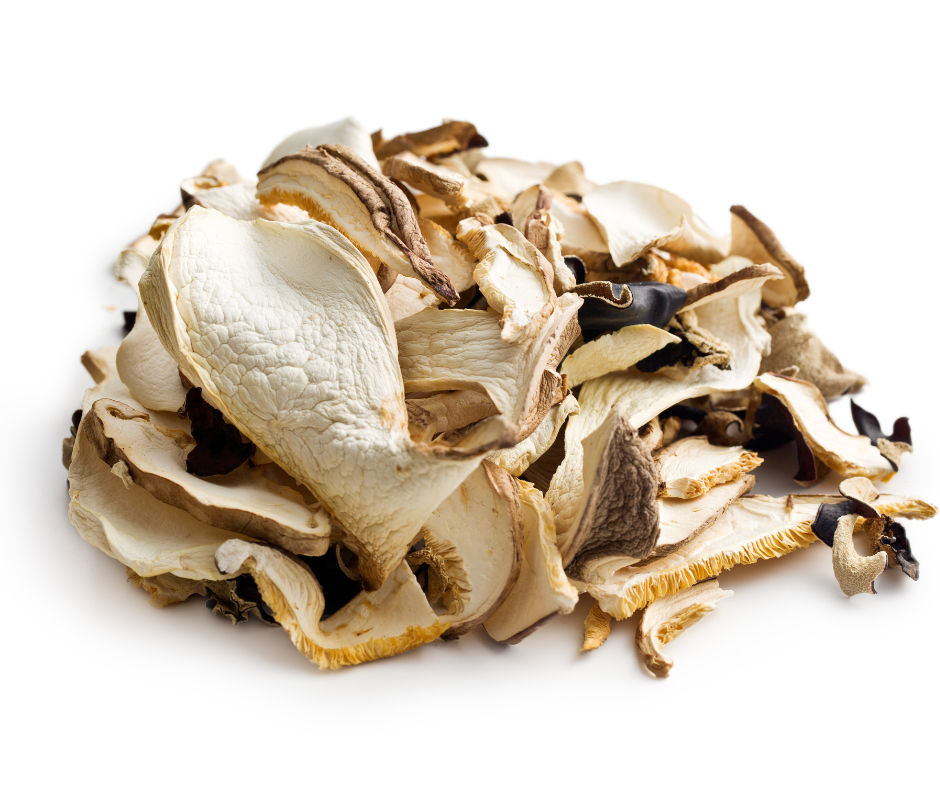
Did you know you can grow your own Oyster mushrooms indoors? Well, when I tried out one of these awesome oyster mushroom kits, I couldn’t eat all the delicious mushrooms it produced in time. Reluctantly, I had to throw some of them out.
However, I’ve now learned a trick to keep my homegrown mushrooms edible for years at a time: dehydrating them.
After dehydrating your mushrooms, you can rehydrate them by cooking them in butter. They soak up lots of flavors when cooked this way. Plus, you can’t even tell that they were dried.
So, whether you always have a few stray mushrooms that you can’t eat before they go bad or grow your own as I did, dehydrating your mushrooms can ensure you never have to toss them out.
43. Seaweed
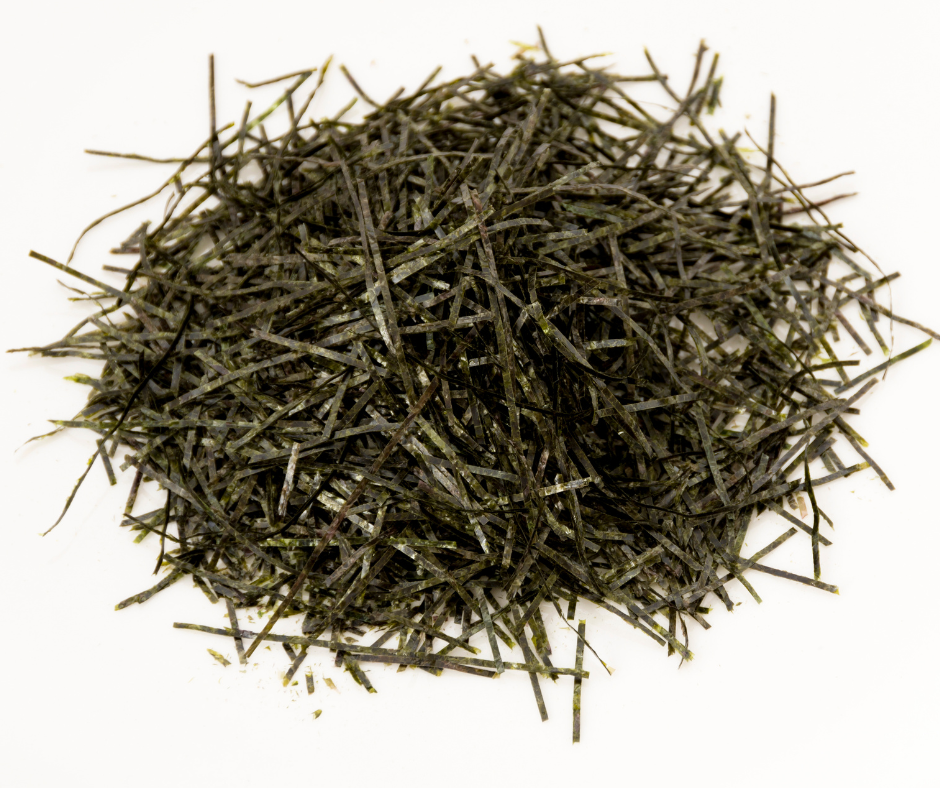
If you live somewhere near the ocean, you can harvest your own seaweed from the sea (check local laws first) and dehydrate it.
It makes the list of weird things to dehydrate because few people try it, but you’ll find dried seaweed in almost every grocery store worldwide, so you can’t go wrong with this one!
It makes for a yummy stand-alone snack, but you can also use it as a seasoning. I love using dehydrated seaweed as a garnish on my rice, ramen, and miso soup. It adds a wonderful salty flavor – all for free!
44. Corn Silk
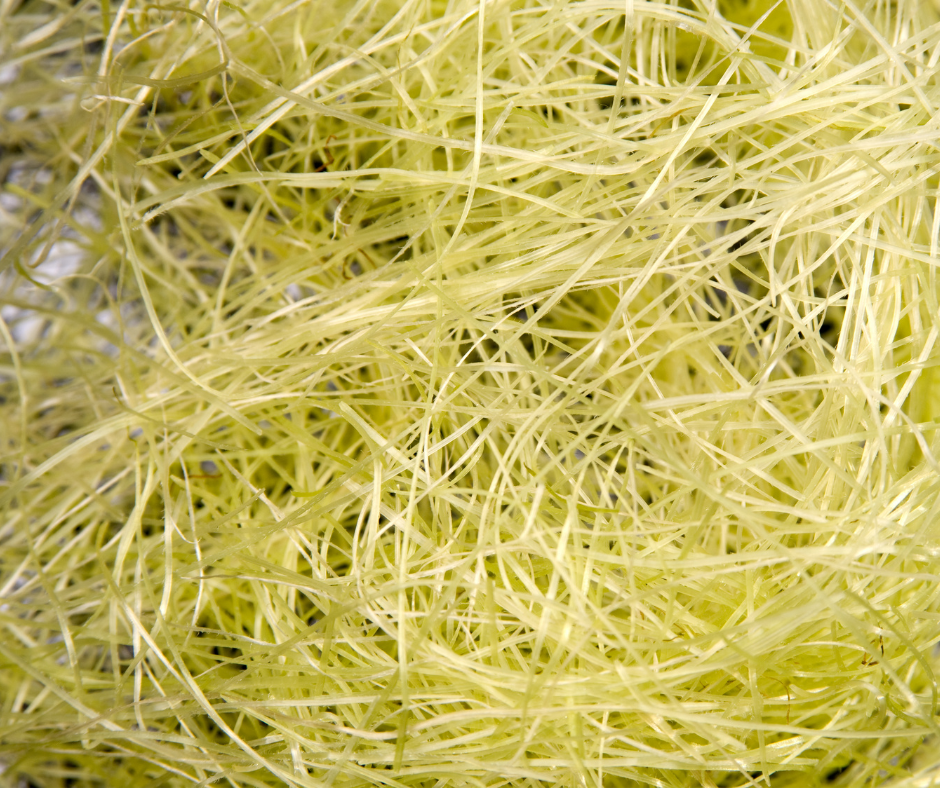
Don’t throw away your corn silks! Instead, dehydrate them and use them in homemade soaps for a luxurious effect and mild scrub.
You can also use dehydrated corn silks to make tea. It tastes slightly sweet and has just a hint of corn, but it has the earthy flavor of beetroot. It’s pretty difficult to describe, so just try some and find out yourself!
45. Nettle

Ahh, nettles. Nettles are among the most useful plants out there, and they are full of nutrition.
If you want to take advantage of their nutritional benefits, dehydrate the leaves, then crush them into a powder. Add it to as many meals as you can – its taste is not too overpowering.
Otherwise, you can use the dehydrated leaves to make nutritious, comforting tea.
Dried nettle stalks are also one of the best materials for making sustainable, plant-based cords and string, so there are tons of uses for this plant.
Plus, since nettles are a very common weed and low-maintenance plant, they are free for picking. Just be sure to wear some gloves. They’re called stinging nettles for a reason!
46. Apple Peels
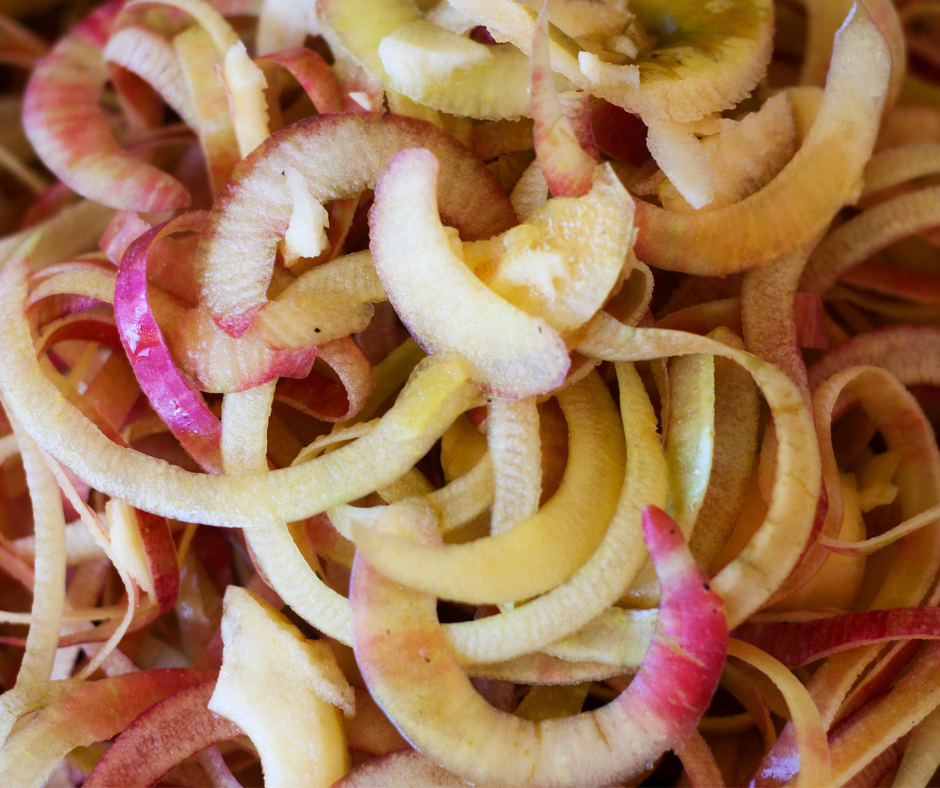
Apples are one of the most common fruits to dehydrate, but you’re here for all the weird things!
So, don’t just dehydrate apples. Dehydrate the peels, too! Powdered apple peels don’t have a strong flavor, but they are very sweet, primarily if you use sweeter apples like red delicious, fuji, pink lady, or Honeycrisp.
After dehydrating and crushing them up, use them as a sweetener for breakfasts, cakes, and other meals.
47. Zucchini
Like radishes, zucchini and other squash make fantastic, healthy veggie chips. Their consistency makes them super crunchy and crispy if you slice them thinly.
To make them yourself, just cut up some zucchini, season or oil them if you want, then stick the slices in your dehydrator. Enjoy them as-is, or combine them with other veggies like dehydrated carrots, radishes, potato skins, and kale for a homemade veggie chip blend. It’s hard to get bored of that!
48. Potatoes

If you want your potatoes to last longer, you can shred and dehydrate them for your own instant potatoes. Whenever you want some hash browns or mashed potatoes, cook them in oil or mix them with boiling water, and voila! It’s so simple and a real money-saver, too.
49. Sweet Potatoes
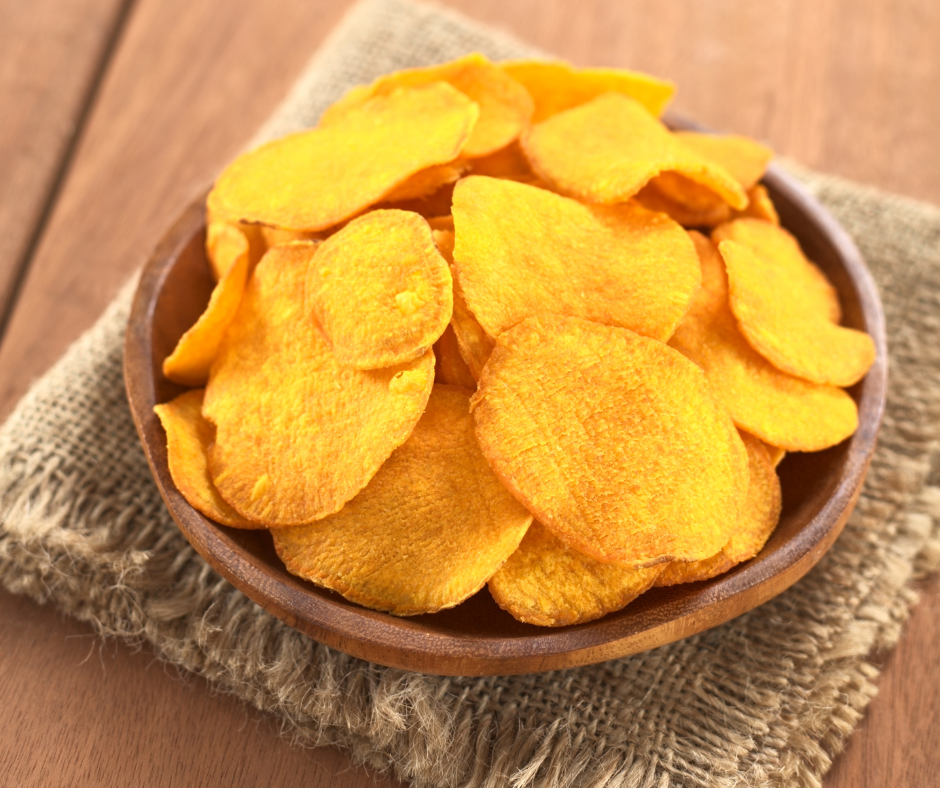
The last, but certainly not the least, weird thing to dehydrate is sweet potatoes. Like with standard potatoes, you can shred them up and use them as instant mashed potatoes, but you can also slice them thinly and coat them in oil before dehydrating them to make some fantastic chips!
A Note on Dehydrators
If you want to take advantage of all these weird things to dehydrate, you’ll need a reliable dehydrator to get the job done.
You can get dehydrators in all shapes and sizes, but when purchasing one, the brand matters. The best dehydrator brands include Excalibur, Nesco, and Cabela’s. They can get quite pricey, but you often get what you pay for with these machines.
Here’s a Nesco one on Amazon that works great. You can also get them secondhand from Amazon, saving you a bit of money.
Still, Excalibur dehydrators are my personal favorite. I believe in buying the best tools you can afford, and these guys are the best.
For example, I spent years mucking around with a cheaper blender before buying a Vitamix last year. Hallelujah! I can’t believe the difference. It makes the others look like manual herb grinders, what a beast. No more lumps in smoothies – even strawberry seeds disappear. I adore my Vitamix, and I try hard to buy only the best. It’s just not worth it otherwise.
Here’s a good-size Excalibur dehydrator:
Nine trays would be my minimum. Any less, and you’ll struggle for space unless you want to do tiny batches.
For example, nine trays usually only hold about four of my zucchini after I slice them up, and I have more than four zucchini to dehydrate during harvest season!
I won’t go into dehydrators any further. I’ll leave it for another article down the road, where I’ll compare Excalibur dehydrators to others. If you have a specific comparison you want to see, leave a comment!
Final Thoughts
There you have it, 49 weird things to dehydrate in your dehydrator. Let us know if you try any of these and how it turns out.
What are your tips, which strange things have you made in your dehydrator? Let us know in the comments below!
More Reading on Food Preparation and Preservation
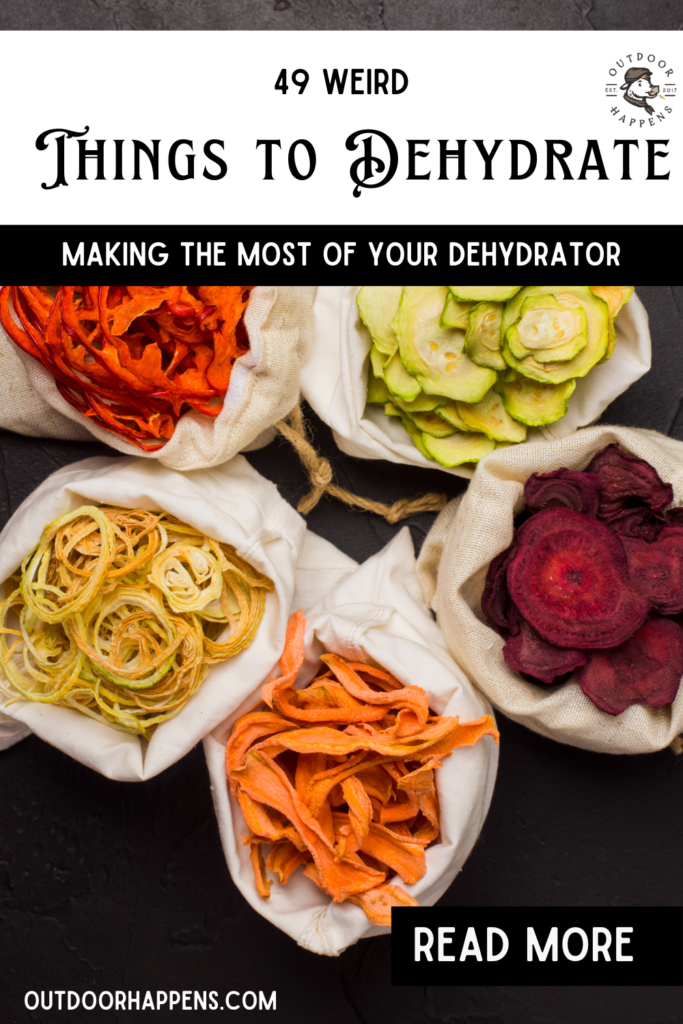

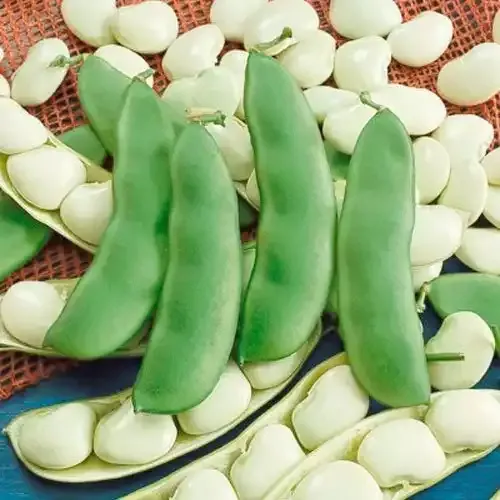

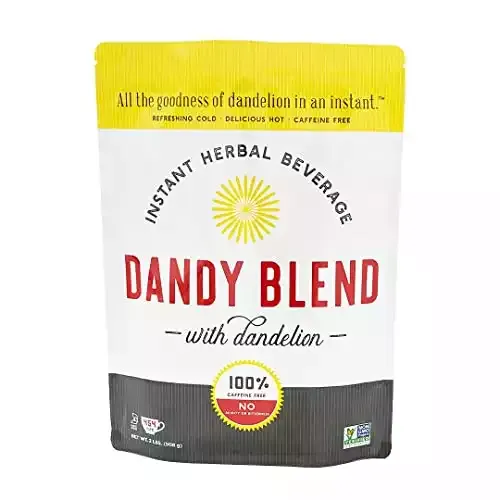
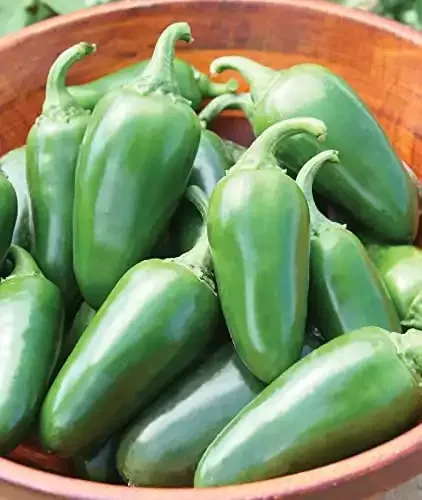
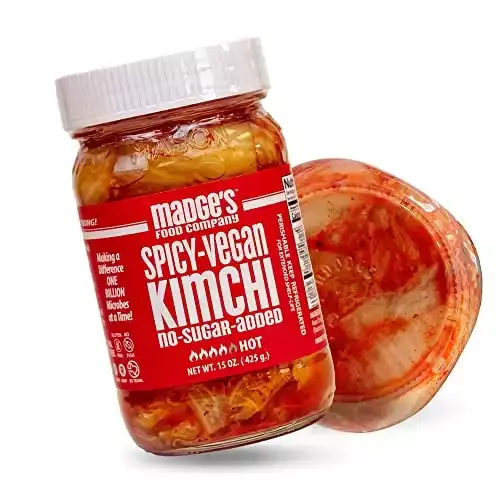


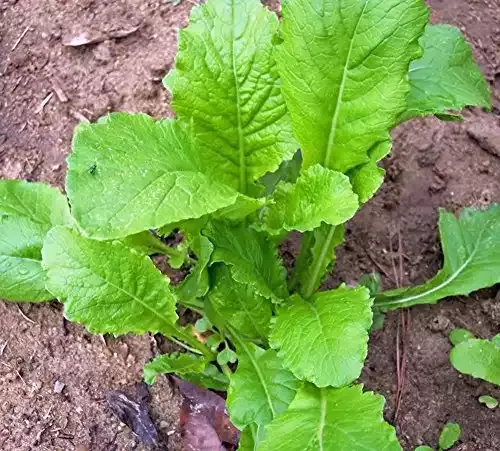
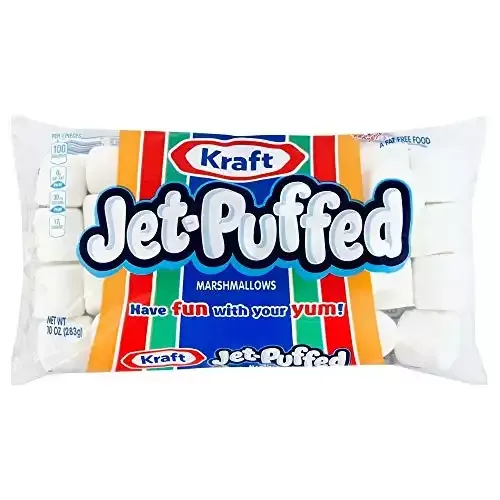
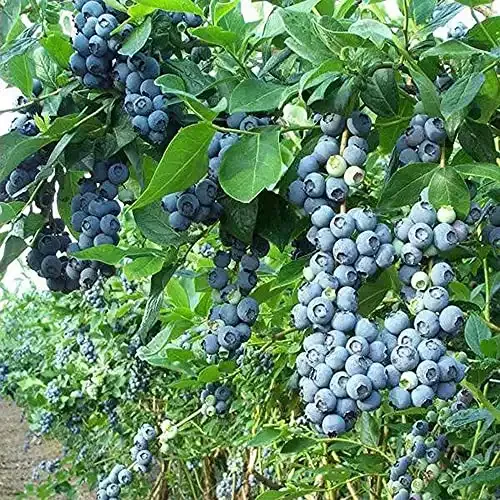
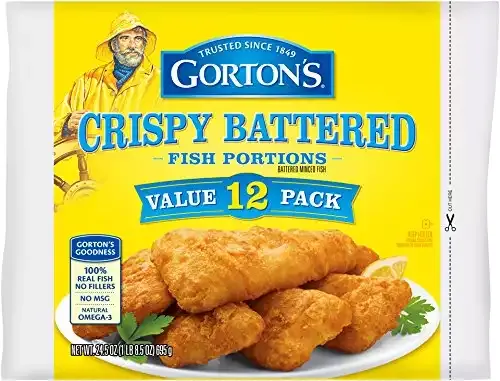
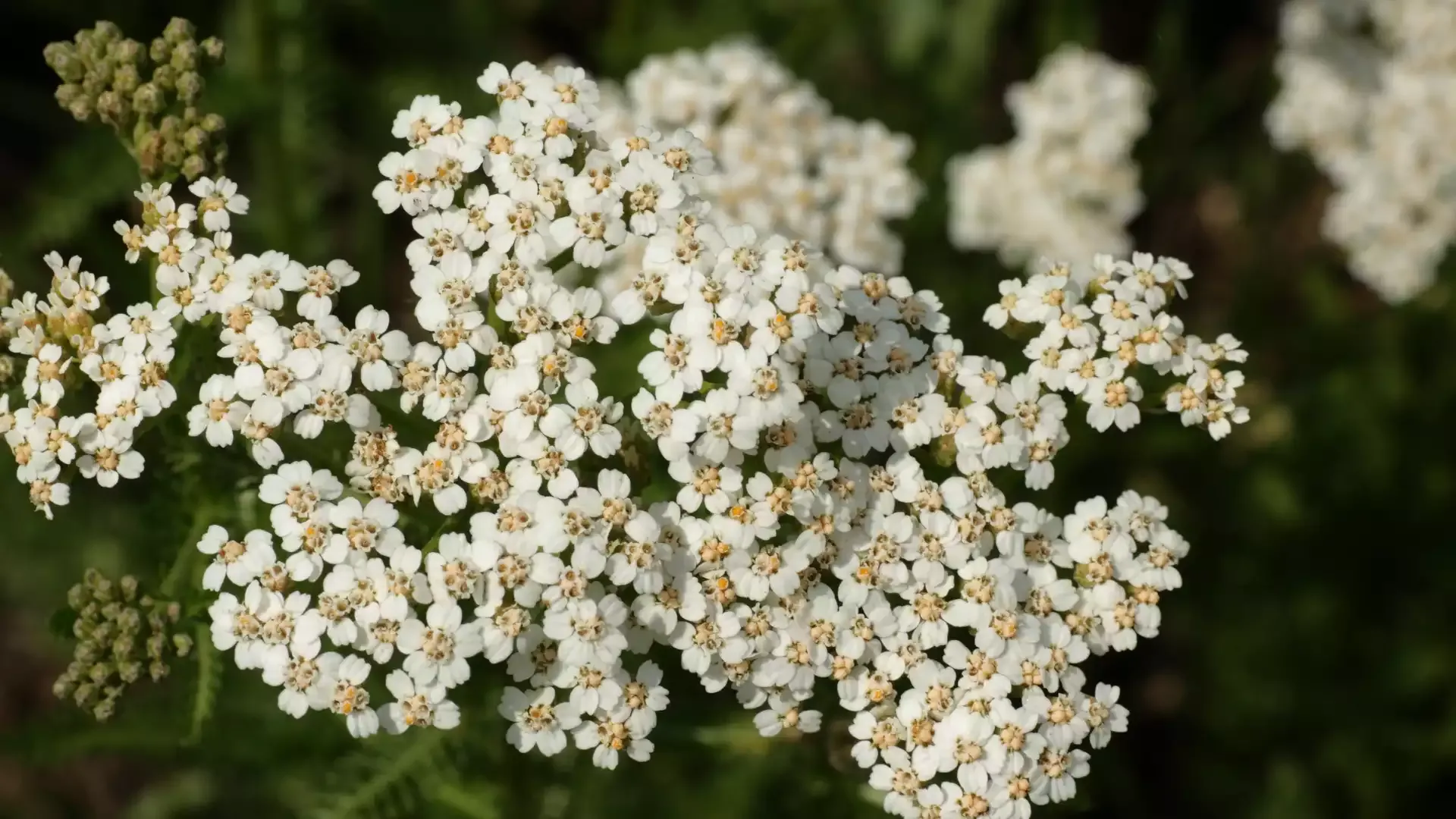
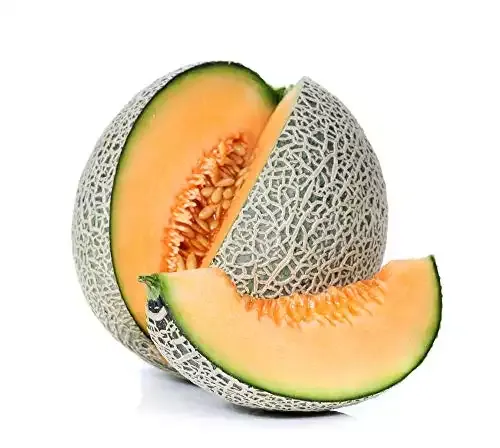

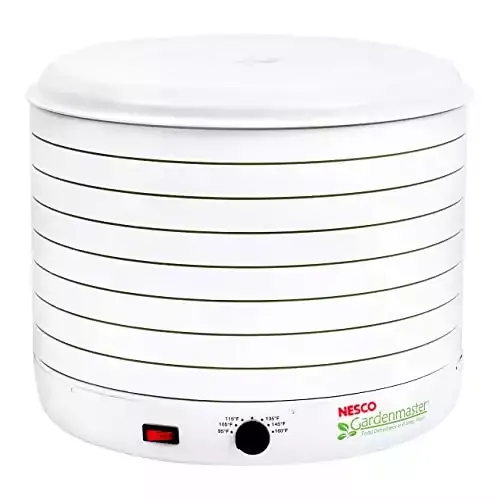
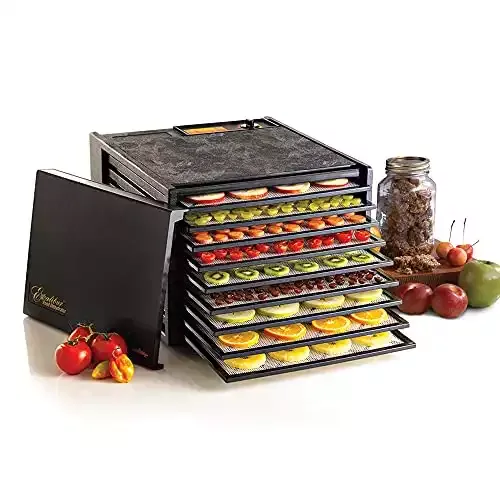
![Growing Sugar Snap Peas Made Easy [From Seed to Harvest!]](https://69be7209.flyingcdn.com/wp-content/uploads/2022/03/plump-peas-on-the-vine-green-farm-garden-768x514.jpg)
![Ooni Koda 16 Pizza Oven Review – To Buy or NOT to buy? [2023]](https://69be7209.flyingcdn.com/wp-content/uploads/2020/11/homemade-italian-cheese-pizza-768x512.jpg)
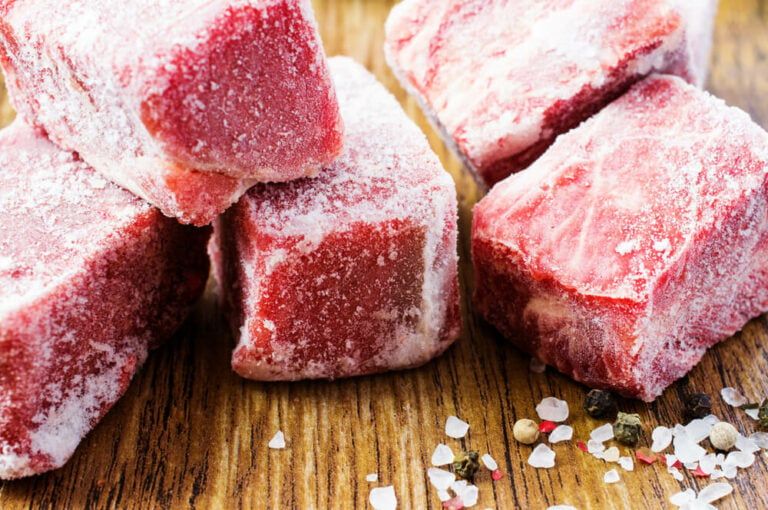

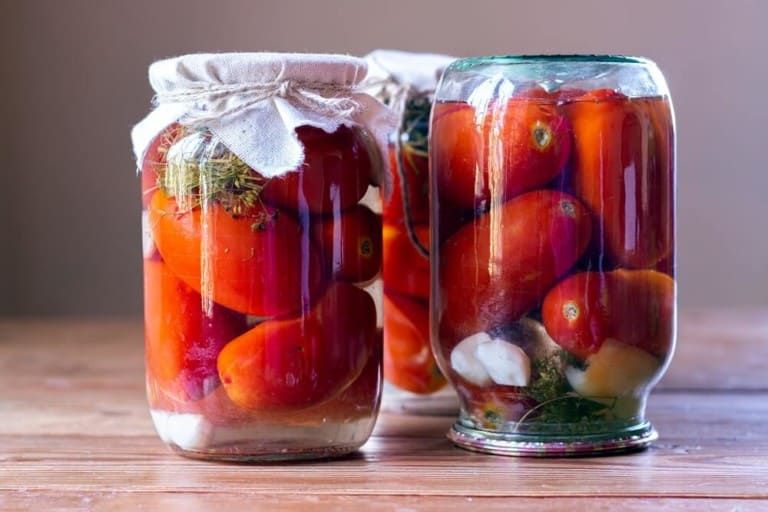
![What to Serve With Sliders at a Party [12 Yummy Side Dishes!]](https://69be7209.flyingcdn.com/wp-content/uploads/2021/12/beef-cheeseburger-sliders-with-chopped-onion-768x512.jpg)
Can you provide the recipe and instructions for making the wine leather? Thanks!
Hi @Denise. Of course! That’s one of my personal favorites.
To make the fruit leather, I usually mix 3/4 cups apple sauce to 1/3 cup wine in a blender. You can also add around 2 cups of fruit, such as grapes, apricots, prunes, cherries, or strawberries to the mixture for a more flavorful result.
Then, blend the mixture well. After that, just pour it into your dehydrator and dry it at 135º F for 5-9 hours or until it has a flexible texture.
I hope you give it a shot! It’s an absolute hit with all my friends – they’ve come to expect it any time I visit their homes.
Rhubarb leaves are toxic – don’t eat them!
The picture of the “(stinging) nettle” (Urtica ssp.) does not show nettle but “Lamium album”. Weird… 😉
Thanks Martina!
This image was automatically created by Amazon for one of their Stinging Nettle listings!
I’ve fixed it and thank you kindly for the feedback!
Elle
I dehydrate Onion Greens and add to soups, stock, stews, eggs, casseroles, scalloped potatoes, chili. Wash, dry on a towel and chop 125* in my Excalibur 3-6 hours . Make a cream cheese dip w chive blossoms, two 1-2 handfuls chopped up and dried onion greens 2 tbs or a handful of chopped chives, to taste, add a tsp of vinegar, I use my homemade chive blossom vinegar a tbs of sour cream and a tbs of mayo, salt n pepper, garlic powder to one block of cream cheese, low fat works fine if you choose, amazing! Great on crackers or top a baked potato, fill celery sticks or use as a veggie dip.
This sounds delicious Sherrie, thanks so much for sharing!